![]()
![]()
![]()
![]() 2015 was a mixed bag of a year for Bollywood. On one hand, we saw a lot of new-age filmmakers come up with some really off-beat stuff, while on the other, we were subjected to some same old, regressive, masala films.
The classic confusion that every movie critic faces in picking the top films of the year is whether to go with flicks that have Box Office tills ringing or go with movies that set one’s own heart fluttering.
I have simply avoided the whole dilemma by including both. So without any further ado, here are the top five popular movies of the year:
2015 was a mixed bag of a year for Bollywood. On one hand, we saw a lot of new-age filmmakers come up with some really off-beat stuff, while on the other, we were subjected to some same old, regressive, masala films.
The classic confusion that every movie critic faces in picking the top films of the year is whether to go with flicks that have Box Office tills ringing or go with movies that set one’s own heart fluttering.
I have simply avoided the whole dilemma by including both. So without any further ado, here are the top five popular movies of the year:
![]() 1. Tanu Weds Manu Returns: Banno tera swagger is the sexiest!
1. Tanu Weds Manu Returns: Banno tera swagger is the sexiest!
![]() As the old age saying goes,
As the old age saying goes,
“Marriages are made in heaven, but so are thunder and lightening.”
Around five years ago,
Tanu Weds Manu hit the silver screens recording the unlikely union of its titular characters Tanu (Kangna Ranaut) and Manu (R Madhavan).
Fast-forward four years in reel-time and the fairy-tale ending of the prequel quickly turned into a grim nightmare.
The opposites in Tanu and Manu attracted initially but would they live and grow old with each other? Well that's the amusing question that is explored in the sequel.
Tanu Weds Manu Returns is a funny as hell rom-com and has a plot to match the hilarity. Just like the original, the authentic portrayal of a middle-class family in a small town of India gives the sequel its distinct flavor that adds to its allure.
The movie is undoubtedly a showcase for the massive talent of Ranaut, who sinks her teeth into a double-role challenge this time around, and is ably assisted in performance by a superb ensemble cast.
TWMR is the kind of cinema that the Indian and Pakistani masses crave for. A formula with wedding and marriage at the heart of it simply cannot fail in the subcontinent.
If you love Bollywood, you surely would have loved the film and even if you don’t, this movie shows how terribly entertaining B-Town flicks can be.
[embed width-"620" height="348"]https://vimeo.com/125015966[/embed]
2. Bajrangi Bhaijaan: The cross-border
Bhaijaan!
![]()
If Bollywood is a film genre then
Bajrangi Bhaijaan is arguably one of the best in this category. With a massive superstar in
bhai aka Salman Khan, a ravishing eye-candy in Kareena Kapoor and a powerhouse performer in Nawazuddin Siddiqui, you can hardly go wrong with the masses.
Throw in a chart-busting musical score, some extremely hilarious light moments and well-choreographed action sequences for good measure, and you would be laughing all the way to the bank.
But wait, even the yummiest of film cakes require a sweet cherry on top as a metaphoric coup de grace to go for the total kill at the Box Office. And this elusive ingredient proved to be a cute mute; the adorable little kid, who was an absolute show-stealer.
Long story short,
Bajrangi Bhaijaan is highly entertaining with a gripping storyline and as a bonus the cross-border comedy drama doesn’t even paint Pakistan in a negative light.
[embed width-"620" height="348"]https://vimeo.com/131088673[/embed]
3. Prem Ratan Dhan Payo: Sanskaar rules! (And so does Salman Khan)
![]()
What’s better than one Salman Khan?
Simple!
Two Salman Khans, but with Sooraj R Barjatya’s signature
sanskaar (family values) to woo the family audience.
It took more than 15 years for the super hit
jodi (pair) of Salman Khan and Sooraj Barjatya to reunite but it took less than 15 days for the duo to cross the double-century mark at the Indian Box Office with
Prem Ratan Dhan Payo.
But much to the chagrin of serious cinema lovers,
PRDP is
as typical as Bollywood can get. At times, one wonders whether he is actually watching a movie from the 80s.
But negative nostalgia aside, the movie is a fine, family-oriented fare.
A typical Bollywood
masala flick is usually expected to aid the audience in experiencing a host of emotions; namely laughter, sigh, gasp, and tears and
Prem Ratan Dhan Payo makes us undergo all of the aforementioned variety and then some.
[embed width-"620" height="348"]https://vimeo.com/141164564[/embed]
4. Dilwale: Nostalgia manipulation!
![]()
The idea was to make the iconic
jodi of Bollywood dance around the world, do some stunts and earn a couple of 100 crores.
Dilwale might be a hit at the Box Office but it lacks brains, has low-IQ humour and an underwhelming and trite plot.
The license of getting this timeless duo back on silver screen should've been left to
Karan Johar or Aditya Chopra, who know how to make best use of the pair. Rohit Shetty needs to make a note that ritzy cars that fly cannot make his film an interesting affair.
He is like a sleight of hand magician, who has been coasting on just a couple of tricks. But that’s the thing with a limited number of acts, when the audience gets used to them, you are yesterday’s news in no time.
Dilwale was insanely popular prior to its release but
couldn’t live up to the hype. The iconic tinsel town
jodi is promising when it comes to their on-screen chemistry but this time a terribly impotent script held them back.
[embed width-"620" height="348"]https://vimeo.com/145184394[/embed]
5. Bajirao Mastani: Poetry in motion!
![]()
More than a decade in the making, Sanjay Leela Bhansali’s magnum opus finally hit the theatres this year.
Bajirao Mastani explores the forbidden love between the 18
th century Maratha general Bajirao (Ranveer Singh) and warrior princess Mastani (Deepika Padukone). To complete the tempestuous triangle, we also have Kashibai (Priyanka Chopra), Bajirao’s wife.
They say ‘hell hath no fury like a woman scorned’ and while all three of the leading actors are sizzling in their roles, it is Chopra who raises the mercury with her scorching and nuanced performance, perfectly exhibiting the insecurities of a spurned consort.
With Bhansali at the helm, one always expects a breath-taking production design but the magnificence displayed through the dazzling costumes and the opulent sets is easily matched by the jaw-dropping choreography of the battle sequences.
Whisper it quietly, but the sheer epicness of this cinematic extravaganza has some of the film critics calling it the modern day
Mughal-e-Azam.
[embed width-"620" height="348"]https://vimeo.com/134219069[/embed]
![]() While there are some movies that top charts, some are just unforgettable and leave a mark. Here are the top five movies of the year that were quite impactful in my opinion:
1. Bombay Velvet:
While there are some movies that top charts, some are just unforgettable and leave a mark. Here are the top five movies of the year that were quite impactful in my opinion:
1. Bombay Velvet: A magnificent disaster!
![]() Bombay Velvet
Bombay Velvet is rigmarole of an ordinary man going against all odds to become a big shot for his love Rosie – an aspiring jazz singer – and how their hopes and dreams collide with their individual realities as they survive in a newly independent India that struggles to find its feet.
The movie was an amalgamation of earnest performances and a done-to-death story format. It can pass as a pastiche of Hollywood gangsterism bearing imprints of Martin Scorsese’s style but it was the art direction that recharged the otherwise
lacklustre yarn.
Any cinephile who is a sucker for a period-costume piece would immediately fall in love with Anurag Kashyap’s chef-d’oeuvre. With swish vintage cars, glinting guns, infrastructure of the city and carefully draped evening gowns with equal attention to the earthy Eastern remnants of a place that had not yet become a metropolis, Kashyap left no stone unturned to take the audience back into the India of 60’s.
Rajeev Ravi’s moving cinematography, Amit Trivedi’s beautiful background score and Thelma Schoonmaker’s top class editing ameliorated the film which ultimately is one-dimensional in its philosophy.
[embed width-"620" height="348"]https://vimeo.com/122614813[/embed]
2. Hunterrr: Hunting down taboos!
![]()
In a film industry where item number peppered fares are masqueraded as family entertainers,
Hunterrr manages to be a non-vulgar, sex comedy.
Despite belonging to the same genre as movie franchises
Grand Masti and
Kya Kool Hain Hum, the Gulshan Deviah starrer does not qualify as a raunchy adult comedy. If anything, it’s more of a ‘coming of age’ flick (no pun intended) which has shades of Steve McQueen’s
Shame and Joseph Gordon Levitt’s
Don Jon.
The movie chronicles the sexual exploits of a male nymphomaniac in a middle-class urban Indian milieu.
Long story short,
Hunterrr is a must-watch for anyone who wishes to see true love grapple with irrational male libido in a seamless recreation of a period sub continental setting.
https://www.youtube.com/watch?v=ytDp30vuiCo
3. Manjhi: The Mountain Man: A chiselled love story!
![]()
Shah Jahan, your act is up! Make way for Dasarth Manjhi, the new lover extraordinaire in town. Taj Mahal might be universally lauded as the ultimate symbol of love but it’s not a patch on a road chiselled and hammered through a hardy mountain with
the iron will of a single person.
Despite the recent glut of biopics hitting the Indian screens,
Manjhi manages to inspire like no other. The movie narrates the true story of Dasarth Manjhi, who out of love for his deceased wife carves a way through a rugged mountain using only a hammer and a chisel.
The movie rests on the shoulders of Nawazuddin Siddiqui who plays the titular character. The powerhouse performer could read the label from back of a ketchup bottle and still have all of us mesmerised and he doesn’t disappoint playing the protagonist this time either.
Manjhi had the potential of becoming a masterpiece but average storytelling, under-baked subplots and less than stellar production values took away from the potential of the premise.
But make no mistake, the film still has more soul than your typical Bollywood pieces and is sure to warm even the coldest of hearts through this tragic romance-tale of an inspirational individual.
[embed width-"620" height="348"]https://vimeo.com/133734023[/embed]
4. Masaan: Fly away!
![]()
There are films that are supposed to be watched and then there are movies that are meant to be experienced.
Masaan falls in the latter category.
Masaan (Crematorium in Sanskrit), narrates two parallel story in the holy Indian city of Varanasi where lives of the principal characters unfold against the backdrop of the Cremation
ghats on the banks of river Ganges.
The protagonists of both narratives are unwilling to sacrifice their happiness by adhering to the primitive societal barriers of gender and caste. It is all the more ironic when you consider that these main characters are denied life freedom in the holy city where Hinduism promises soul liberation from the cosmic life cycle.
Packed in a mere 109 minutes, the movie doesn’t just touch upon the universally enduring theme of life and loss but it additionally talks about redemption and repentance amongst others without being overtly melodramatic, due in no small part to some amazingly nuanced acting.
The evocative cinematography and production design, along with a soul-stirring musical score combine together to create this delirious, melancholic concoction that is sure to leave every single viewer liberated.
[embed width-"620" height="348"]https://vimeo.com/134652584[/embed]
5. Tamasha: A conformist rebel!
![]() Tamasha
Tamasha, a story that was simple but intricately executed. A non-linear narrative that was haphazardly treated but yet it was alluring in its form.
It was yet another one of Imtiaz Ali’s
mind-jolting ventures of self-discovery. The movie transpired subconsciously as it progressed, leaving the viewer in a vortex of emotional conflict. It makes one question the complexities of a tedious life and to question the inhibitions that leave a person unable to chase his dreams.
Through commendable acting skills of Ranbir Kapoor, Ali was triumphant in opening a window to soul-searching and stirring the urge to channel all energies in discovering the purpose of being.
In the lyrical words of the protagonist, aided by none other than the maestro AR Rahman,
“Dil ka bhanwar kahe sun saathiya, chup na dupatte me tu o chhaliyaa”
https://www.youtube.com/watch?v=VN_qxutU_qc
[poll id="396"]



 Mahi Arora (
Mahi Arora ( While Kareena was supposed to bring the sex quotient in the film, it is
While Kareena was supposed to bring the sex quotient in the film, it is  In the film’s defence, it is not a rip-off of Fashion as so many commentators have said pre- and post-film. There may be some glimpses but the films are actually quite different.
For one, Fashion was a lot bolder than Heroine.
In Fashion, Bhandarkar bared it all, but in
In the film’s defence, it is not a rip-off of Fashion as so many commentators have said pre- and post-film. There may be some glimpses but the films are actually quite different.
For one, Fashion was a lot bolder than Heroine.
In Fashion, Bhandarkar bared it all, but in 
 I am disappointed in myself, because it took me over an hour to realise where I had seen Talaash before.
I hadn’t seen it before, I had read it.
I am disappointed in myself, because it took me over an hour to realise where I had seen Talaash before.
I hadn’t seen it before, I had read it.
 Aamir is playing his age - something a certain other Khan needs to learn from. He is a cop of high repute but there is no over the top praising by his team members like the entry of
Aamir is playing his age - something a certain other Khan needs to learn from. He is a cop of high repute but there is no over the top praising by his team members like the entry of  Instead there is a
Instead there is a  Talaash demands big efforts from the cast and they deliver.
It’s great to see a vintage Rani Mukherjee performance. A perfect reminder of why she was a Film Fare worthy actress not long ago. Even though, far away from a glamorous look, she comes off as strangely hot in her sari clad housewife look. Charming indeed and much needed after a disastrous Aiyya. Her confrontation scene with Aamir on the road is really good and her helplessness in front of her psychiatrist is expressed beautifully.
Nawazuddin Siddiqui is having the best year of his life.
With Kahaani, Gangs of Wasseypur and now Talaash, looks like his struggling days are over. His portrayal of Taimur is nothing short of brilliant. This is one actor I would want to see more and more in every film.
Kareena Kapoor is good, minus the unfitting perfect Hindi accent unlike other prostitutes shown in the film. Even if we ignore that, it still cannot be called a Kareena film as her other performances are far stronger.
Raj Kumar Yadav is also impressive once again. I am now eagerly waiting for his ‘Shahid’. Subrat Dutta is a star too, even though in a much smaller role.
Having said as much, the film
Talaash demands big efforts from the cast and they deliver.
It’s great to see a vintage Rani Mukherjee performance. A perfect reminder of why she was a Film Fare worthy actress not long ago. Even though, far away from a glamorous look, she comes off as strangely hot in her sari clad housewife look. Charming indeed and much needed after a disastrous Aiyya. Her confrontation scene with Aamir on the road is really good and her helplessness in front of her psychiatrist is expressed beautifully.
Nawazuddin Siddiqui is having the best year of his life.
With Kahaani, Gangs of Wasseypur and now Talaash, looks like his struggling days are over. His portrayal of Taimur is nothing short of brilliant. This is one actor I would want to see more and more in every film.
Kareena Kapoor is good, minus the unfitting perfect Hindi accent unlike other prostitutes shown in the film. Even if we ignore that, it still cannot be called a Kareena film as her other performances are far stronger.
Raj Kumar Yadav is also impressive once again. I am now eagerly waiting for his ‘Shahid’. Subrat Dutta is a star too, even though in a much smaller role.
Having said as much, the film  This is his second venture with Excel Entertainment after the era defining Dil Chahta Hai and he has delivered another masterpiece for them. The perfectionist that he is, Khan has given one of his best performances to date.
His self-inflicted pain is obvious on his face. His eyes communicate his tiredness, his face communicates his regret. The best scene of the film, in which he is reliving the tragedy of his life and how he could have changed the whole event, is one of the best ever created on cinema. When he was happy to see his wife enjoying a senseless movie, the audience felt his relief.
When he cried, people on either side of me in the theatre cried; definitely the best performance of the year. Even better than Paan Singh Tomar and Gangs of Wasseypur.
If you plan on watching Talaash, make sure you don’t miss any part of it. Every minute is important. Don’t text, don’t tweet and don’t take toilet breaks.
Talaash is no joke; its
This is his second venture with Excel Entertainment after the era defining Dil Chahta Hai and he has delivered another masterpiece for them. The perfectionist that he is, Khan has given one of his best performances to date.
His self-inflicted pain is obvious on his face. His eyes communicate his tiredness, his face communicates his regret. The best scene of the film, in which he is reliving the tragedy of his life and how he could have changed the whole event, is one of the best ever created on cinema. When he was happy to see his wife enjoying a senseless movie, the audience felt his relief.
When he cried, people on either side of me in the theatre cried; definitely the best performance of the year. Even better than Paan Singh Tomar and Gangs of Wasseypur.
If you plan on watching Talaash, make sure you don’t miss any part of it. Every minute is important. Don’t text, don’t tweet and don’t take toilet breaks.
Talaash is no joke; its 


 Kareena Kapoor Khan plays an 'NGO-type' in Gori Tere Pyar Mein. Photo: Facebook page Gori Tere Pyar Mein[/caption]
Overall, the movie provides light entertainment and a fun watch, with some moments that may replay in the head later.
Kareena Kapoor Khan plays an 'NGO-type' in Gori Tere Pyar Mein. Photo: Facebook page Gori Tere Pyar Mein[/caption]
Overall, the movie provides light entertainment and a fun watch, with some moments that may replay in the head later.



 Unfortunately, nowadays I feel Saif Ali Khan’s performance is a bleak reminder of the hero he was in the 90s – none of the movies he is doing have any nostalgic value or cinematic value nor have they brought in good business; examples being
Unfortunately, nowadays I feel Saif Ali Khan’s performance is a bleak reminder of the hero he was in the 90s – none of the movies he is doing have any nostalgic value or cinematic value nor have they brought in good business; examples being  Soon after, Armaan (Govinda) comes into Yudi’s life. Armaan is the superstar of Bollywood and wants Yudi to write a fresh script (copy of multiple Hollywood blockbusters) for him. Having no other choice, Yudi accepts his offer and starts to alter his lifestyle and terms. The rest of the movie is the journey of how Yudi, as a writer and a person, learns how to end some things and start new things.
Soon after, Armaan (Govinda) comes into Yudi’s life. Armaan is the superstar of Bollywood and wants Yudi to write a fresh script (copy of multiple Hollywood blockbusters) for him. Having no other choice, Yudi accepts his offer and starts to alter his lifestyle and terms. The rest of the movie is the journey of how Yudi, as a writer and a person, learns how to end some things and start new things.
 Performances wise, Saif stands tall and delivers a dependable performance. One can easily recall the comfort he had in the movies
Performances wise, Saif stands tall and delivers a dependable performance. One can easily recall the comfort he had in the movies  Nachcho Saaray G Phaar Kay is a song of the film that provided the perfect entertainment to the audience and credit for that goes solely to Govinda. It wouldn’t be wrong to say that if given a good script and the opportunity of outdoing himself, Govinda can still be in the race of the most entertaining actors in the industry.
Nachcho Saaray G Phaar Kay is a song of the film that provided the perfect entertainment to the audience and credit for that goes solely to Govinda. It wouldn’t be wrong to say that if given a good script and the opportunity of outdoing himself, Govinda can still be in the race of the most entertaining actors in the industry.  The dialogues are fresh, some of which require reading between the lines, but they go along with the mood of the movie. Content wise, Happy Ending will make you feel ‘happy’ at the ‘end’ of the movie. It’s an entertaining romantic comedy with a few hummable songs.
The dialogues are fresh, some of which require reading between the lines, but they go along with the mood of the movie. Content wise, Happy Ending will make you feel ‘happy’ at the ‘end’ of the movie. It’s an entertaining romantic comedy with a few hummable songs.
 I would rate it a 3.5 out of five on the basis of decent performances, a good script, nice music and lightness of the theme.
And no, it’s not based on the American TV show,
I would rate it a 3.5 out of five on the basis of decent performances, a good script, nice music and lightness of the theme.
And no, it’s not based on the American TV show, 


 Photo: Aanchal Lawn Facebook page[/caption]
Though it is unsurprising to see public figures from various backgrounds introduce their own clothing brand, the public’s response to his new venture was rather startling. Some of the women whom I shared this news with reacted in the following ways:
Photo: Aanchal Lawn Facebook page[/caption]
Though it is unsurprising to see public figures from various backgrounds introduce their own clothing brand, the public’s response to his new venture was rather startling. Some of the women whom I shared this news with reacted in the following ways:
 Photo: Friendsmania[/caption]
In Pakistan, there has been a growing trend among celebrities stepping into the field of clothing, introducing their own brands and boutiques. Not to mention, even our fashion designers – who initially would only stick to designing considerably expensive outfits, mostly consisting of bridal, formal and trendy wear – have
Photo: Friendsmania[/caption]
In Pakistan, there has been a growing trend among celebrities stepping into the field of clothing, introducing their own brands and boutiques. Not to mention, even our fashion designers – who initially would only stick to designing considerably expensive outfits, mostly consisting of bridal, formal and trendy wear – have  Photo: Twitter[/caption]
However, in order for Aanchal to work, Hussain would need to up-his-game significantly. It is too early to decide if a clothing brand carrying his name would be successful or not, but one thing is for sure: The public demands better styles and designs, irrespective of who is selling it to them. So it would do Hussain well to rethink his designs and bring in better people to facilitate his new venture.
Unlike his raw feats of playing with Tahir Shah’s hair and feeding mangoes to people on his TV show, Hussain needs to bring in finesse for Aanchal to sell.
Photo: Twitter[/caption]
However, in order for Aanchal to work, Hussain would need to up-his-game significantly. It is too early to decide if a clothing brand carrying his name would be successful or not, but one thing is for sure: The public demands better styles and designs, irrespective of who is selling it to them. So it would do Hussain well to rethink his designs and bring in better people to facilitate his new venture.
Unlike his raw feats of playing with Tahir Shah’s hair and feeding mangoes to people on his TV show, Hussain needs to bring in finesse for Aanchal to sell.
 Photo: IMDb[/caption]
This year you will bear witness the rise of a rather different kind of a Marvel Comics superhero – Ant Man.
Directed by Peyton Reed,
Photo: IMDb[/caption]
This year you will bear witness the rise of a rather different kind of a Marvel Comics superhero – Ant Man.
Directed by Peyton Reed,  Photo: IMDb[/caption]
Emma Stone, Joaquin Phoenix, and Jamie Blackley will appear in Woody Allen’s recent production,
Photo: IMDb[/caption]
Emma Stone, Joaquin Phoenix, and Jamie Blackley will appear in Woody Allen’s recent production,  Photo: IMDb[/caption]
Any movie starring
Photo: IMDb[/caption]
Any movie starring  Photo: Bajrangi Bhaijaan Facebook page[/caption]
Each year, Bollywood releases a Salman Khan movie on Eid that smashes box office records. This year, Salman will be playing the role of Pavan Kumar Chaturvedi and Bajrangi Bhaijaan in Bajrangi Bhaijaan. Some reports claim that Salman is
Photo: Bajrangi Bhaijaan Facebook page[/caption]
Each year, Bollywood releases a Salman Khan movie on Eid that smashes box office records. This year, Salman will be playing the role of Pavan Kumar Chaturvedi and Bajrangi Bhaijaan in Bajrangi Bhaijaan. Some reports claim that Salman is 
 Photo: Bajrangi Bhaijaan Facebook page[/caption]
Not just Kareena, the entire subplot of Salman’s love interest was completely unnecessary. In the first half, a good 20 minutes were spent on establishing the love story between Salman and Kareena. As the film lasted 163 minutes, cutting 15 minutes and a song could have made the edit sharper and more gripping. The role could have been played by any actress. Salman could have been a married or single man in the film. It would not have had any impact on the final outcome.
Nawazuddin Siddiqui will be brilliant – proven to be true
And boy was he fantastic. His introductory sequence is a straight lift from Pakistan’s very own Chaand Nawab, and as it turns out, his character is actually called Chaand Nawab. Nawaz comes on screen only in the second half of the movie and takes the burden of carrying the film on his gifted shoulders.
His
Photo: Bajrangi Bhaijaan Facebook page[/caption]
Not just Kareena, the entire subplot of Salman’s love interest was completely unnecessary. In the first half, a good 20 minutes were spent on establishing the love story between Salman and Kareena. As the film lasted 163 minutes, cutting 15 minutes and a song could have made the edit sharper and more gripping. The role could have been played by any actress. Salman could have been a married or single man in the film. It would not have had any impact on the final outcome.
Nawazuddin Siddiqui will be brilliant – proven to be true
And boy was he fantastic. His introductory sequence is a straight lift from Pakistan’s very own Chaand Nawab, and as it turns out, his character is actually called Chaand Nawab. Nawaz comes on screen only in the second half of the movie and takes the burden of carrying the film on his gifted shoulders.
His  Photo: Bajrangi Bhaijaan Facebook page[/caption]
Salman as an actor has limitations, we all know that. But have those precincts ever made any difference? No.
Salman is not a method actor. He will never be
Photo: Bajrangi Bhaijaan Facebook page[/caption]
Salman as an actor has limitations, we all know that. But have those precincts ever made any difference? No.
Salman is not a method actor. He will never be  Photo: Bajrangi Bhaijaan Facebook page[/caption]
Kabir Khan is just a glorified director, slightly more intelligent than Farah Khan – proven to be wrong
This is where I was completely wrong. The problem I have had with other Kabir films is that they were made on the pretence of being intelligent and logical social dramas, which in reality they were not. Be it New York or
Photo: Bajrangi Bhaijaan Facebook page[/caption]
Kabir Khan is just a glorified director, slightly more intelligent than Farah Khan – proven to be wrong
This is where I was completely wrong. The problem I have had with other Kabir films is that they were made on the pretence of being intelligent and logical social dramas, which in reality they were not. Be it New York or  Photo: Bajrangi Bhaijaan Facebook page[/caption]
Lastly, Kabir has done a remarkable job in treating the screenplay the way it deserves to be treated. He knew when to take creative liberty in the best interest of the film (armies of both countries being lenient on borders etc.) and knew when to make things look realistic (tunnels at the border,
Photo: Bajrangi Bhaijaan Facebook page[/caption]
Lastly, Kabir has done a remarkable job in treating the screenplay the way it deserves to be treated. He knew when to take creative liberty in the best interest of the film (armies of both countries being lenient on borders etc.) and knew when to make things look realistic (tunnels at the border, 

 Photo: Singh is Bliing Facebook page[/caption]
If you are too big of a Kumar fan, caution is advised before reading further, because even Kumar couldn't save Singh Is Bliing from doom.
Photo: Singh is Bliing Facebook page[/caption]
If you are too big of a Kumar fan, caution is advised before reading further, because even Kumar couldn't save Singh Is Bliing from doom.
 Singh is Bliing Facebook page[/caption]
[caption id="" align="alignnone" width="508"]
Singh is Bliing Facebook page[/caption]
[caption id="" align="alignnone" width="508"] Photo: Singh is Bliing Facebook page[/caption]
Photo: Singh is Bliing Facebook page[/caption]
 Singh Is Bliing Facebook page[/caption]
Singh Is Bliing Facebook page[/caption]

 2015 was a mixed bag of a year for Bollywood. On one hand, we saw a lot of new-age filmmakers come up with some really off-beat stuff, while on the other, we were subjected to some same old, regressive, masala films.
The classic confusion that every movie critic faces in picking the top
2015 was a mixed bag of a year for Bollywood. On one hand, we saw a lot of new-age filmmakers come up with some really off-beat stuff, while on the other, we were subjected to some same old, regressive, masala films.
The classic confusion that every movie critic faces in picking the top  1. Tanu Weds Manu Returns: Banno tera swagger is the sexiest!
1. Tanu Weds Manu Returns: Banno tera swagger is the sexiest!
 As the old age saying goes,
As the old age saying goes,
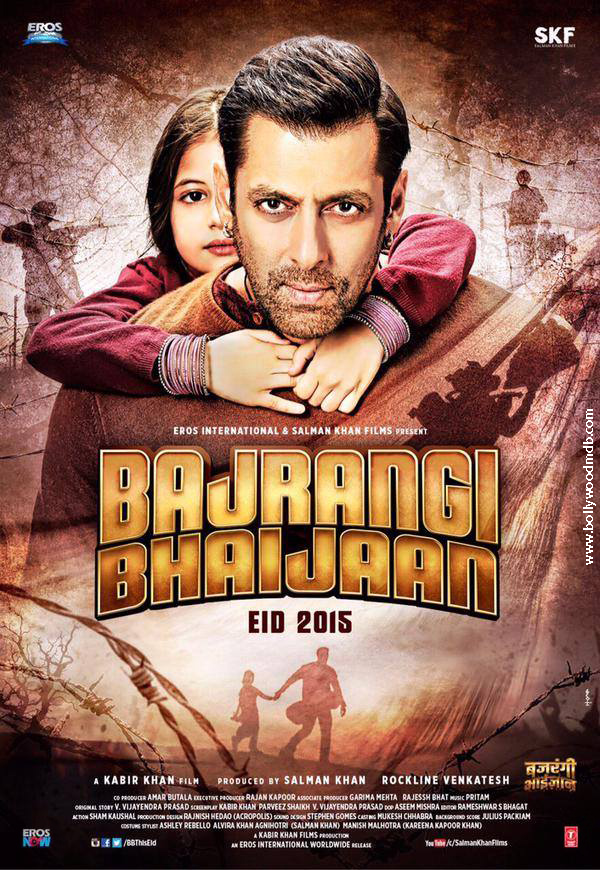 If Bollywood is a film genre then
If Bollywood is a film genre then 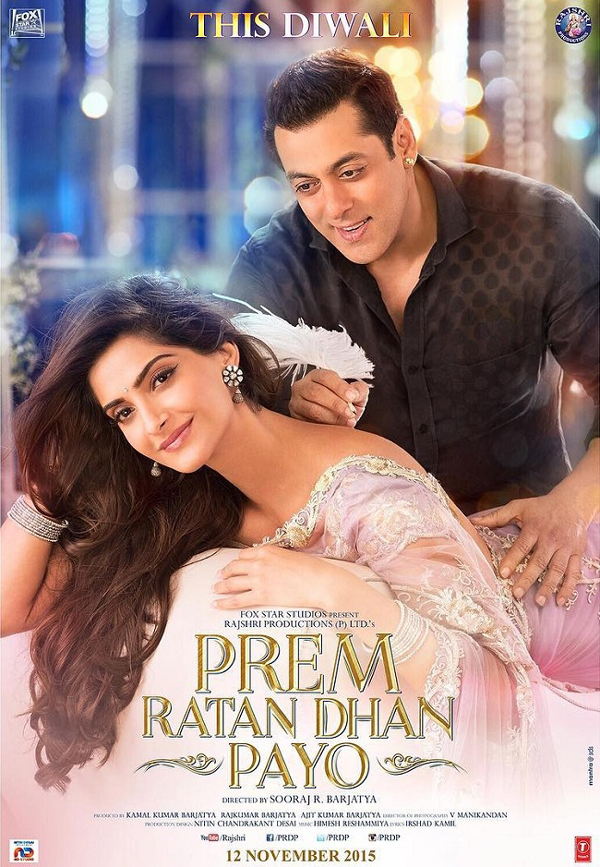 What’s better than one Salman Khan?
Simple!
Two Salman Khans, but with Sooraj R Barjatya’s signature sanskaar (family values) to woo the family audience.
It took more than 15 years for the super hit jodi (pair) of Salman Khan and Sooraj Barjatya to reunite but it took less than 15 days for the duo to cross the double-century mark at the Indian Box Office with Prem Ratan Dhan Payo.
But much to the chagrin of serious cinema lovers, PRDP is
What’s better than one Salman Khan?
Simple!
Two Salman Khans, but with Sooraj R Barjatya’s signature sanskaar (family values) to woo the family audience.
It took more than 15 years for the super hit jodi (pair) of Salman Khan and Sooraj Barjatya to reunite but it took less than 15 days for the duo to cross the double-century mark at the Indian Box Office with Prem Ratan Dhan Payo.
But much to the chagrin of serious cinema lovers, PRDP is 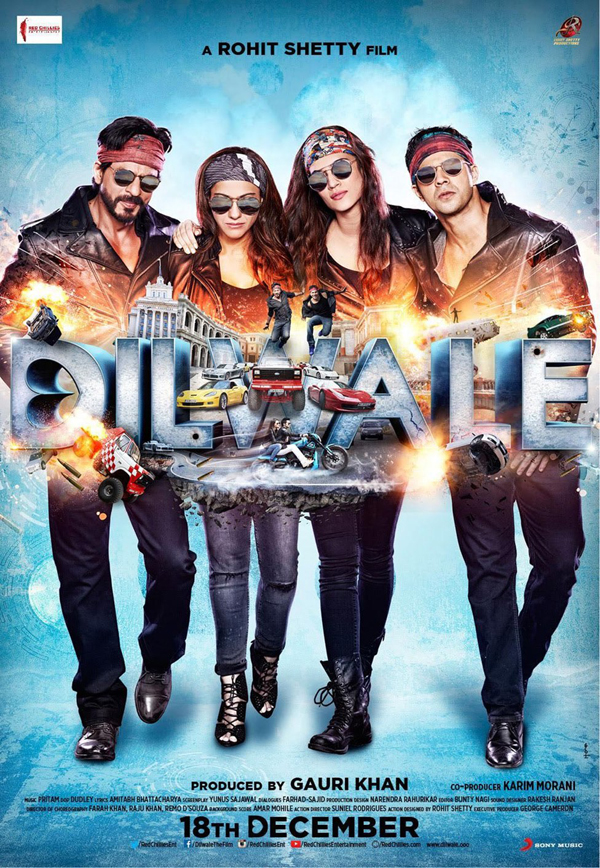 The idea was to make the iconic jodi of Bollywood dance around the world, do some stunts and earn a couple of 100 crores.
Dilwale might be a hit at the Box Office but it lacks brains, has low-IQ humour and an underwhelming and trite plot.
The license of getting this timeless duo back on silver screen should've been left to
The idea was to make the iconic jodi of Bollywood dance around the world, do some stunts and earn a couple of 100 crores.
Dilwale might be a hit at the Box Office but it lacks brains, has low-IQ humour and an underwhelming and trite plot.
The license of getting this timeless duo back on silver screen should've been left to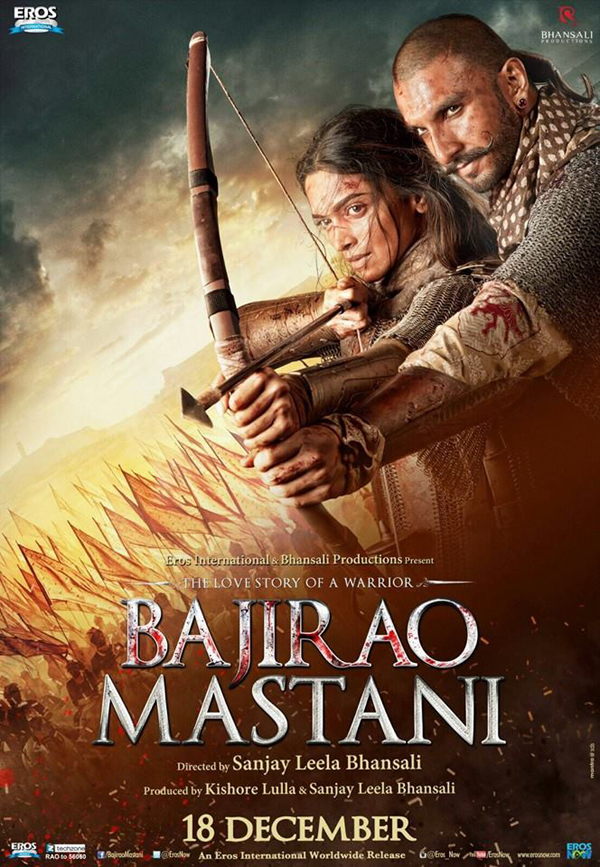 More than a decade in the making, Sanjay Leela Bhansali’s magnum opus finally hit the theatres this year.
More than a decade in the making, Sanjay Leela Bhansali’s magnum opus finally hit the theatres this year.  While there are some movies that top charts, some are just unforgettable and leave a mark. Here are the top five movies of the year that were quite impactful in my opinion:
1. Bombay Velvet: A magnificent disaster!
While there are some movies that top charts, some are just unforgettable and leave a mark. Here are the top five movies of the year that were quite impactful in my opinion:
1. Bombay Velvet: A magnificent disaster!
 Bombay Velvet is rigmarole of an ordinary man going against all odds to become a big shot for his love Rosie – an aspiring jazz singer – and how their hopes and dreams collide with their individual realities as they survive in a newly independent India that struggles to find its feet.
The movie was an amalgamation of earnest performances and a done-to-death story format. It can pass as a pastiche of Hollywood gangsterism bearing imprints of Martin Scorsese’s style but it was the art direction that recharged the otherwise
Bombay Velvet is rigmarole of an ordinary man going against all odds to become a big shot for his love Rosie – an aspiring jazz singer – and how their hopes and dreams collide with their individual realities as they survive in a newly independent India that struggles to find its feet.
The movie was an amalgamation of earnest performances and a done-to-death story format. It can pass as a pastiche of Hollywood gangsterism bearing imprints of Martin Scorsese’s style but it was the art direction that recharged the otherwise 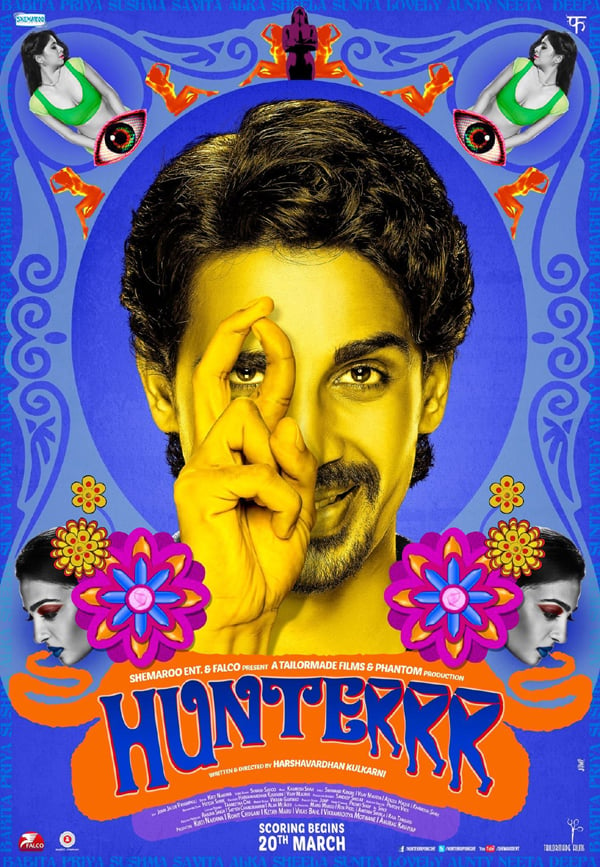 In a film industry where item number peppered fares are masqueraded as family entertainers, Hunterrr manages to be a non-vulgar, sex comedy.
Despite belonging to the same genre as movie franchises Grand Masti and Kya Kool Hain Hum, the Gulshan Deviah starrer does not qualify as a raunchy adult comedy. If anything, it’s more of a ‘coming of age’ flick (no pun intended) which has shades of Steve McQueen’s Shame and Joseph Gordon Levitt’s Don Jon.
The movie chronicles the sexual exploits of a male nymphomaniac in a middle-class urban Indian milieu.
Long story short, Hunterrr is a must-watch for anyone who wishes to see true love grapple with irrational male libido in a seamless recreation of a period sub continental setting.
https://www.youtube.com/watch?v=ytDp30vuiCo
3. Manjhi: The Mountain Man: A chiselled love story!
In a film industry where item number peppered fares are masqueraded as family entertainers, Hunterrr manages to be a non-vulgar, sex comedy.
Despite belonging to the same genre as movie franchises Grand Masti and Kya Kool Hain Hum, the Gulshan Deviah starrer does not qualify as a raunchy adult comedy. If anything, it’s more of a ‘coming of age’ flick (no pun intended) which has shades of Steve McQueen’s Shame and Joseph Gordon Levitt’s Don Jon.
The movie chronicles the sexual exploits of a male nymphomaniac in a middle-class urban Indian milieu.
Long story short, Hunterrr is a must-watch for anyone who wishes to see true love grapple with irrational male libido in a seamless recreation of a period sub continental setting.
https://www.youtube.com/watch?v=ytDp30vuiCo
3. Manjhi: The Mountain Man: A chiselled love story!
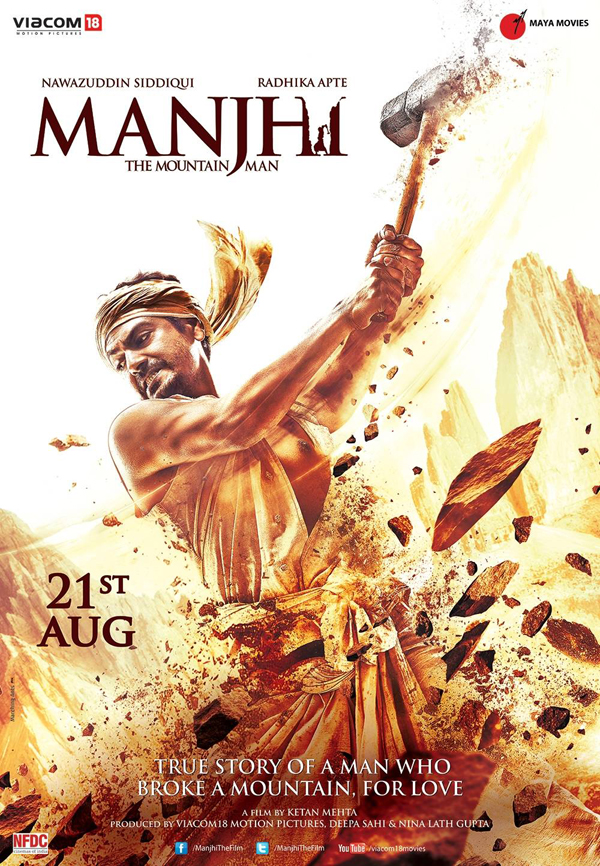 Shah Jahan, your act is up! Make way for Dasarth Manjhi, the new lover extraordinaire in town. Taj Mahal might be universally lauded as the ultimate symbol of love but it’s not a patch on a road chiselled and hammered through a hardy mountain with
Shah Jahan, your act is up! Make way for Dasarth Manjhi, the new lover extraordinaire in town. Taj Mahal might be universally lauded as the ultimate symbol of love but it’s not a patch on a road chiselled and hammered through a hardy mountain with 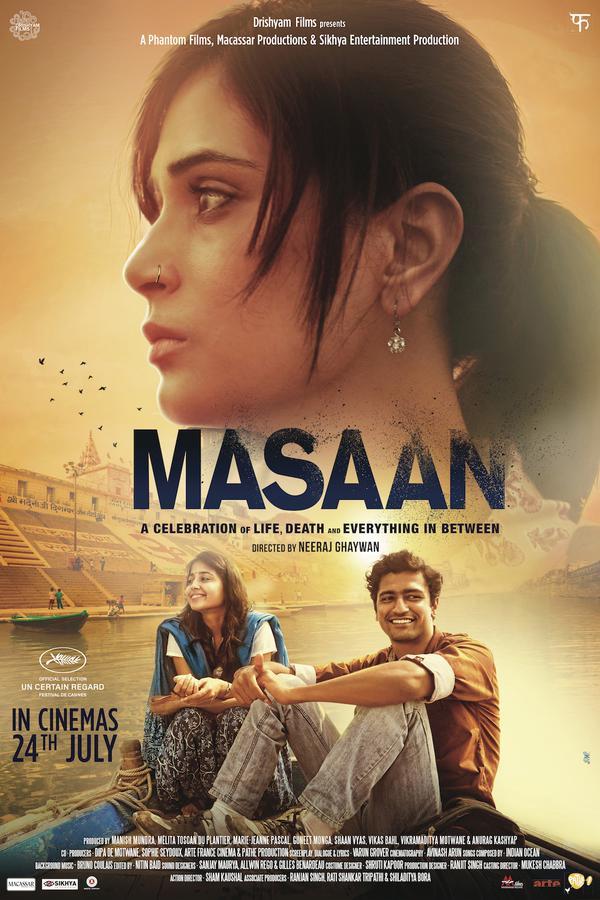 There are films that are supposed to be watched and then there are movies that are meant to be experienced. Masaan falls in the latter category.
Masaan (Crematorium in Sanskrit), narrates two parallel story in the holy Indian city of Varanasi where lives of the principal characters unfold against the backdrop of the Cremation ghats on the banks of river Ganges.
The protagonists of both narratives are unwilling to sacrifice their happiness by adhering to the primitive societal barriers of gender and caste. It is all the more ironic when you consider that these main characters are denied life freedom in the holy city where Hinduism promises soul liberation from the cosmic life cycle.
Packed in a mere 109 minutes, the movie doesn’t just touch upon the universally enduring theme of life and loss but it additionally talks about redemption and repentance amongst others without being overtly melodramatic, due in no small part to some amazingly nuanced acting.
The evocative cinematography and production design, along with a soul-stirring musical score combine together to create this delirious, melancholic concoction that is sure to leave every single viewer liberated.
[embed width-"620" height="348"]https://vimeo.com/134652584[/embed]
5. Tamasha: A conformist rebel!
There are films that are supposed to be watched and then there are movies that are meant to be experienced. Masaan falls in the latter category.
Masaan (Crematorium in Sanskrit), narrates two parallel story in the holy Indian city of Varanasi where lives of the principal characters unfold against the backdrop of the Cremation ghats on the banks of river Ganges.
The protagonists of both narratives are unwilling to sacrifice their happiness by adhering to the primitive societal barriers of gender and caste. It is all the more ironic when you consider that these main characters are denied life freedom in the holy city where Hinduism promises soul liberation from the cosmic life cycle.
Packed in a mere 109 minutes, the movie doesn’t just touch upon the universally enduring theme of life and loss but it additionally talks about redemption and repentance amongst others without being overtly melodramatic, due in no small part to some amazingly nuanced acting.
The evocative cinematography and production design, along with a soul-stirring musical score combine together to create this delirious, melancholic concoction that is sure to leave every single viewer liberated.
[embed width-"620" height="348"]https://vimeo.com/134652584[/embed]
5. Tamasha: A conformist rebel!
 Tamasha, a story that was simple but intricately executed. A non-linear narrative that was haphazardly treated but yet it was alluring in its form.
It was yet another one of Imtiaz Ali’s
Tamasha, a story that was simple but intricately executed. A non-linear narrative that was haphazardly treated but yet it was alluring in its form.
It was yet another one of Imtiaz Ali’s 